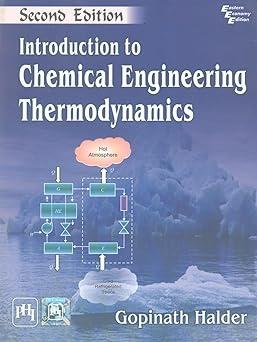Sulphur trioxide is produced according to the reaction [ mathrm{SO}_{2}(mathrm{~g})+frac{1}{2} mathrm{O}_{2}(mathrm{~g}) ightarrow mathrm{SO}_{3} ] Given that
Question:
Sulphur trioxide is produced according to the reaction
\[ \mathrm{SO}_{2}(\mathrm{~g})+\frac{1}{2} \mathrm{O}_{2}(\mathrm{~g}) \rightarrow \mathrm{SO}_{3} \]
Given that
\[ \begin{aligned} & \Delta H_{f, 298}^{0} \text { for } \mathrm{SO}_{2}=-70.96 \mathrm{kcal} / \mathrm{mol} \\ & \Delta H_{f, 298}^{0} \text { for } \mathrm{SO}_{3}=-94.45 \mathrm{kcal} / \mathrm{mol} \\ & \Delta G_{f, 298}^{0} \text { for } \mathrm{SO}_{2}=-71.79 \mathrm{kcal} / \mathrm{mol} \\ & \Delta G_{f, 298}^{0} \text { for } \mathrm{SO}_{3}=-88.52 \mathrm{kcal} / \mathrm{mol} \end{aligned} \]
Constants of isobaric molar heat capacities are tabulated as follows:
(a) Determine the standard heat of reaction as a function of temperature
(b) Determine the equilibrium constant as a function of temperature at \(500 \mathrm{~K}\)
(c) Calculate the standard free energy change at \(500 \mathrm{~K}\).
Step by Step Answer:






